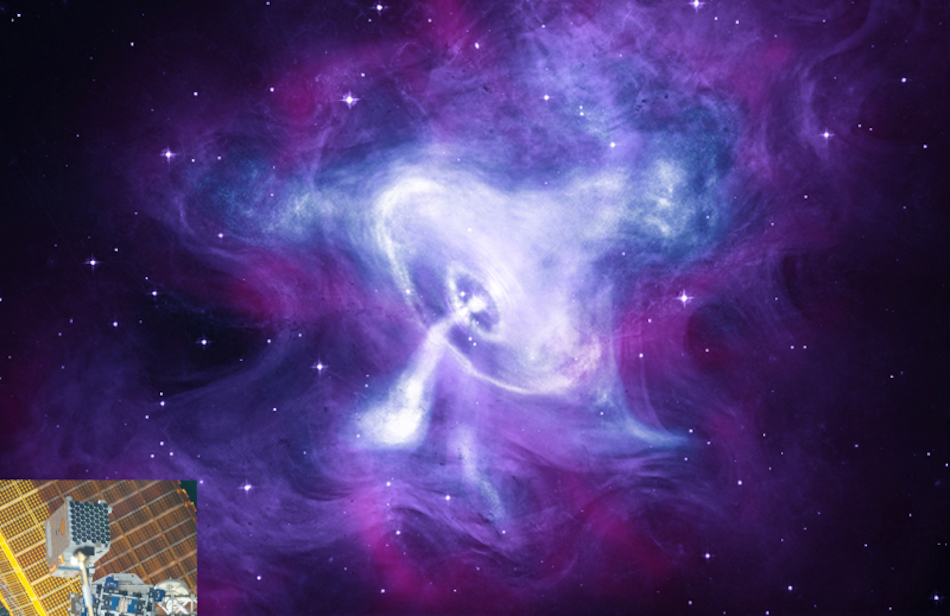
 Credit: X-ray: NASA/CXC/SAO; Optical: NASA/STScI; Infrared: NASA-JPL-Caltech; NASA/NICER
Credit: X-ray: NASA/CXC/SAO; Optical: NASA/STScI; Infrared: NASA-JPL-Caltech; NASA/NICER
Giant Crab Pulse
Pulsars are rapidly spinning neutron stars with very strong magnetic fields which generate beams of radiation over nearly the entire electromagnetic spectrum, from low-energy radio waves to extremely high energy gamma rays. As the pulsar spins, the beam sweeps through space (a kind of celestial lighthouse), producing an observable pulse of radiation. The spin periods of neutron stars can be extremely short, and they can rotate tens or even hundreds of times in a second (about as fast as a rotating blade in a blender). Pulsars are extraordinary clocks, rivaling the precision of atomic clocks on earth, although rotation periods can change due to accretion of matter by the neutron star, or because of "starquakes" produced by sporadic fracturing of the neutron star's solid iron crust. The rise and fall of the pulses are generally regular in peak height as well as in time, too. But some pulsars, every so often, show radio pulses that, for a few millionths of a second, are hundreds to thousands of times brighter than usual. The origin of these "Giant Radio Pulses" is an astrophysical mystery. Previous studies have shown that these giant radio pulses are associated with smaller increases in the brightness of pulses seen in visible light. A new detailed study of the pulsar at the heart of the Crab Nebula (the remnant of a supernova seen from earth in 1054 CE) is advancing our understanding of how energetic these giant pulses are, which helps tell us how these extraordinary pulses are produced.
The image above is a composite X-ray, optical and infrared image of the Crab Nebula, which extends out to about 5 lightyears from the central pulsar (the bright spot near the center of the nebula). the This new study analyzed millions of X-ray pulses using 2 years of X-ray observations from the NICER facility on the International Space Station, along with data from Japanese radio telescopes at Kashima Space Technology Center and the Usuda Deep Space Center. The NICER observations show very precisely that the peak of the X-ray pulses increase by about 4% during giant radio pulses. That might not sound like much, but because X-ray radiation is so much more enegetic than radio or even optical emission (the X-rays NICER monitors are about a million times more energetic than radio emission), the NICER result means that the total energy emitted during giant radio pulses is dozens or hundreds of times higher than previously suspected based on the radio data alone.
Published: April 26, 2021
<
HEA Dictionary ● Archive
● Search HEAPOW
● Other Languages
● HEAPOW on Facebook
● Download all Images
● Education ● HEAD
>

Each week the HEASARC
brings you new, exciting and beautiful images from X-ray and Gamma ray
astronomy. Check back each week and be sure to check out the HEAPOW archive!
Page Author: Dr. Michael F. Corcoran
Last modified Tuesday, 27-Feb-2024 10:15:17 EST


